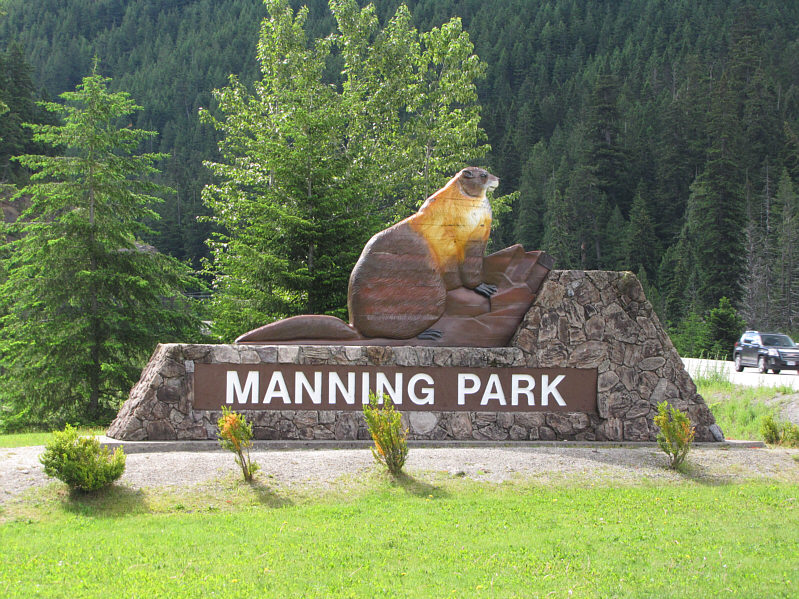
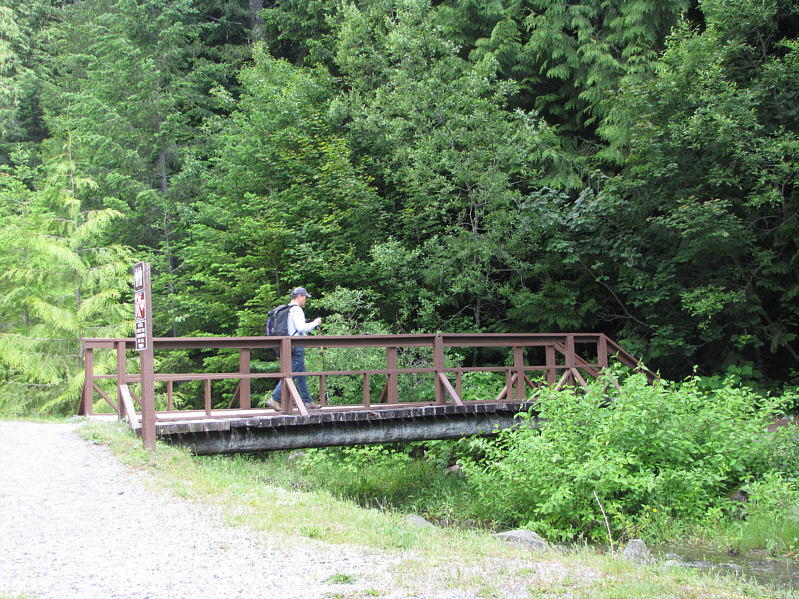
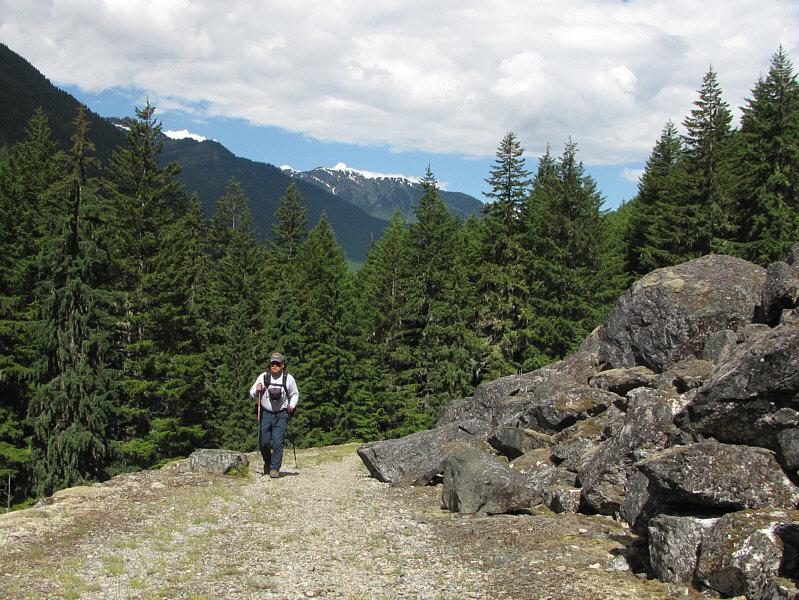
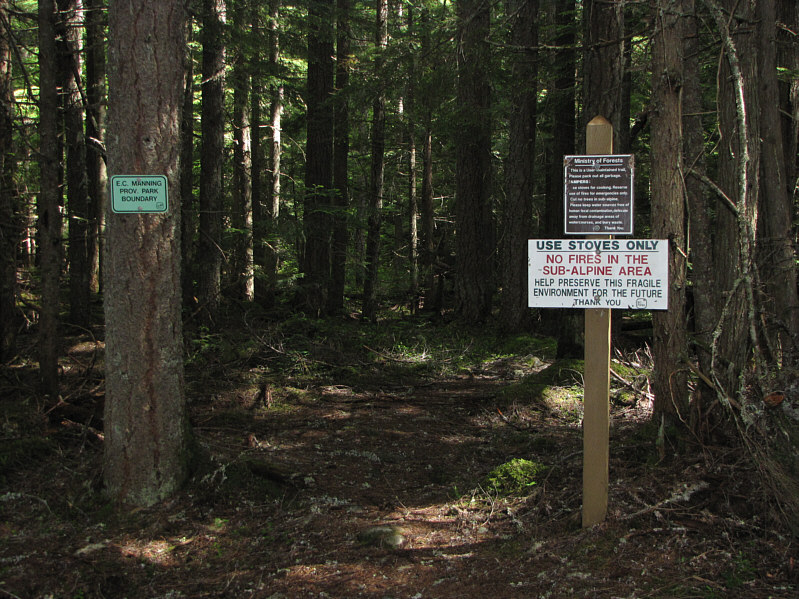
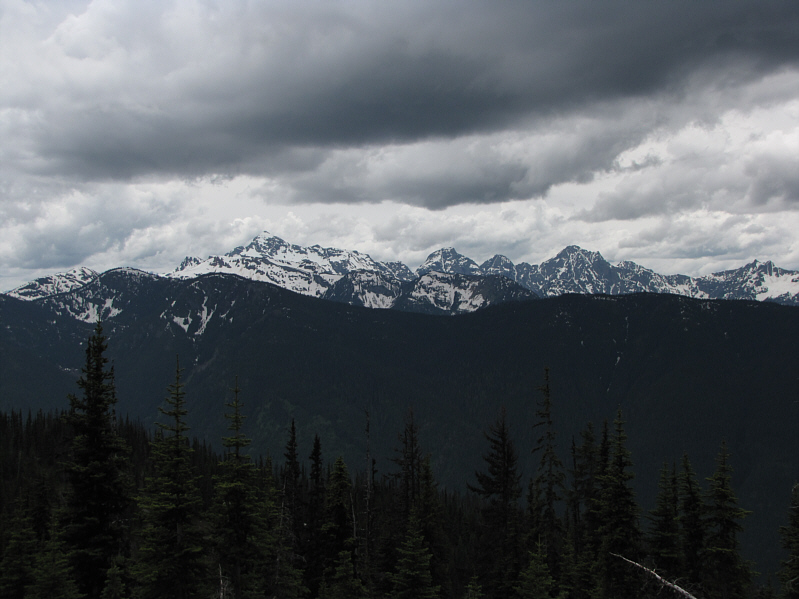
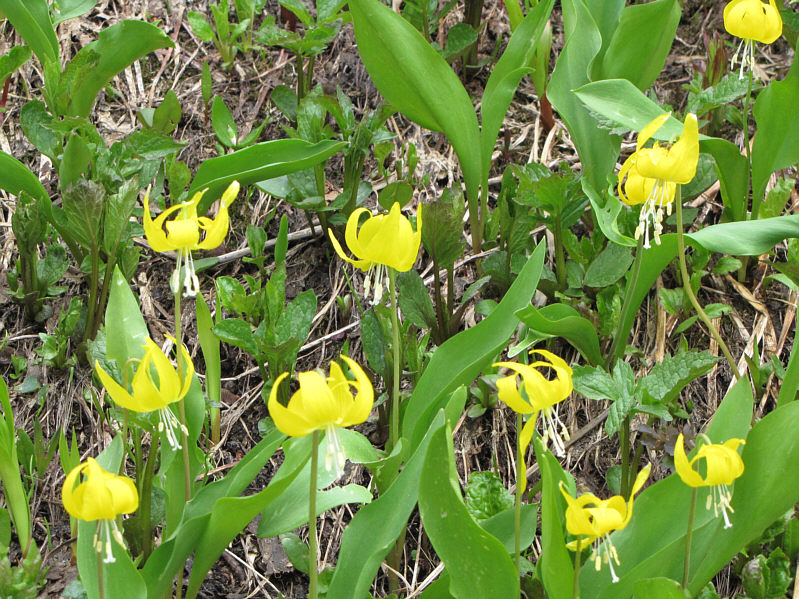
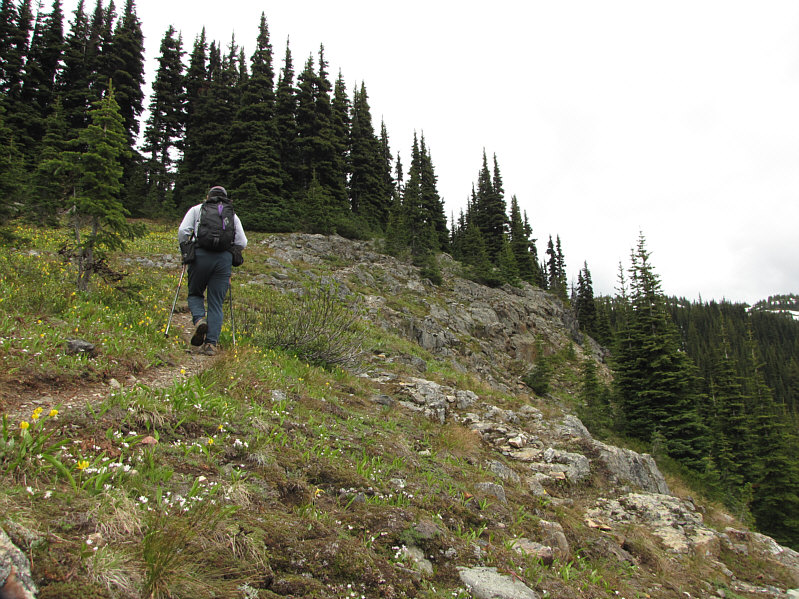
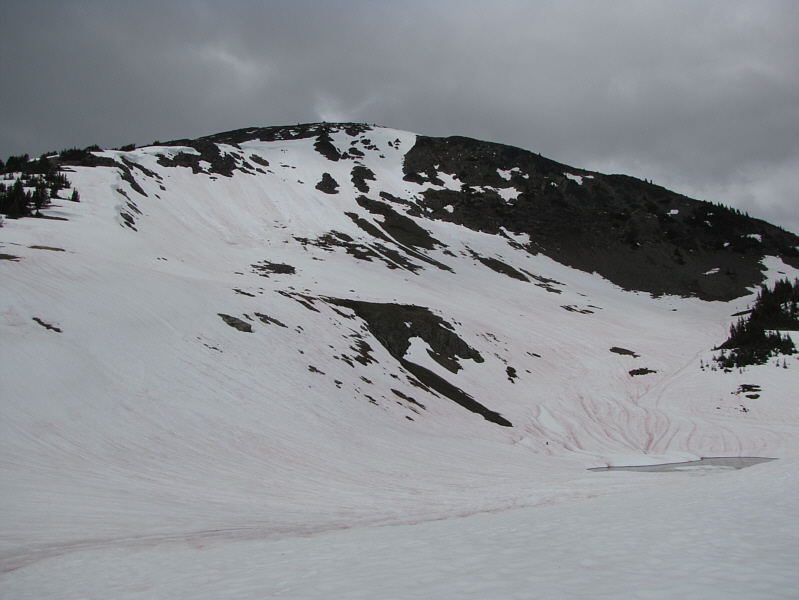
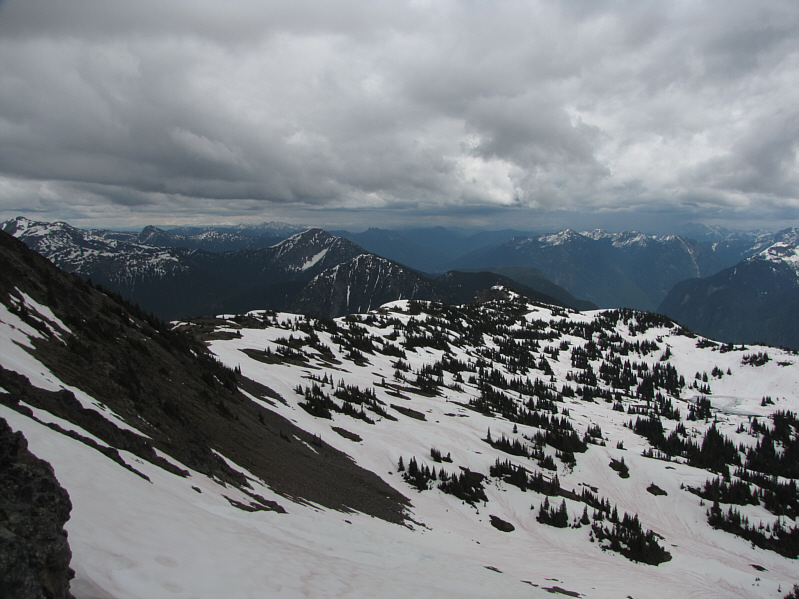
 |
A wooden marmot adorns the sign at the west entrance to Manning Provincial Park. |
 |
Sonny crosses a creek right at the trailhead. |
 |
Sonny hikes along the historic "Engineers Road". |
 |
Strangely, the trail to Mount Outram is mostly outside the provincial park. |
 |
One of the first open views is to the southwest. At left is Silvertip Mountain. |
 |
Glacier lilies are in abundance here. |
 |
The trees start to thin out. |
 |
The route continues up the left hand ridge. |
 |
This is looking east into the bulk of Manning Provincial Park. |
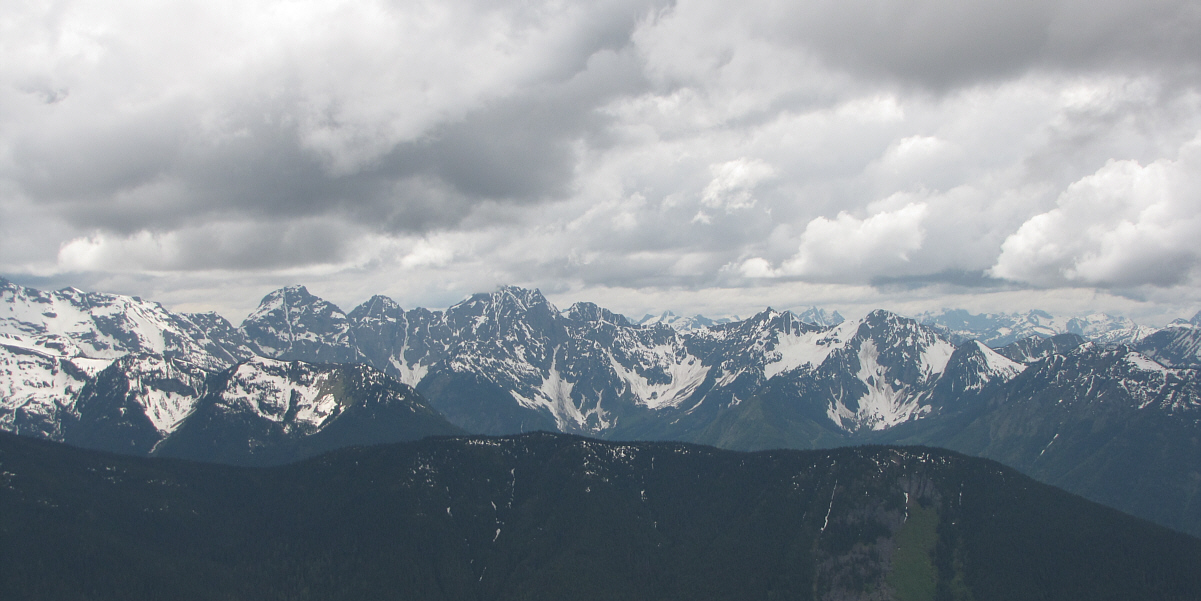
Here is a more comprehensive view to the southwest.